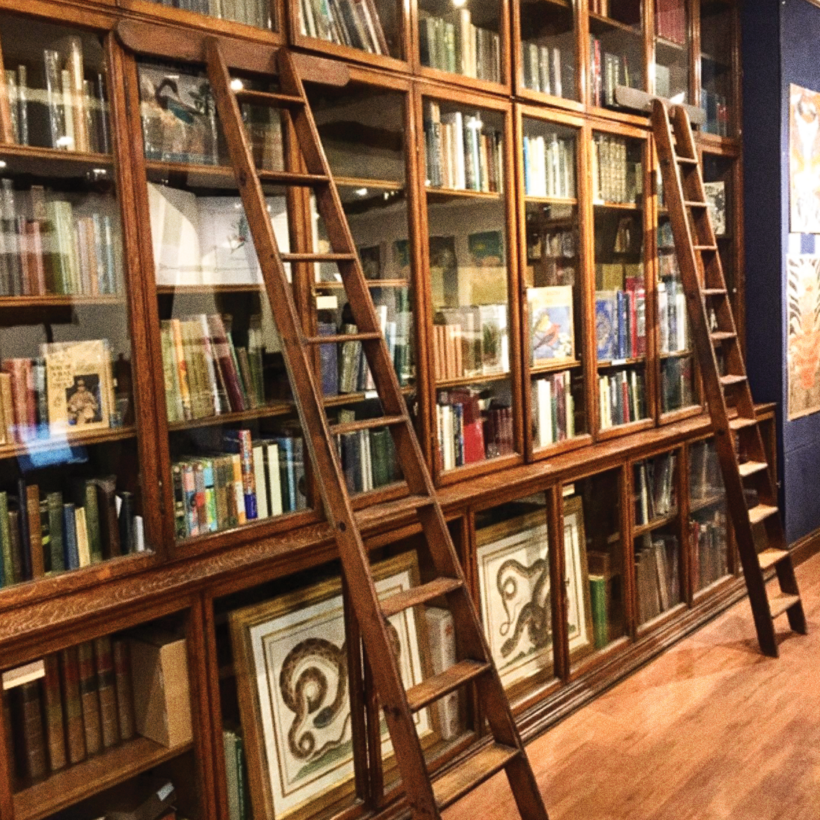Starting to make notes for Once upon a Tome: The Misadventures of a Rare Bookseller was daunting. How do you start to talk about a bookstore with as much history as Henry Sotheran Ltd., which lays claim to being the oldest antiquarian bookstore still operating under the same name—despite being a mere whippersnapper in the grand scheme of things, at a meager 262 years?
The thing about antiquarian booksellers is that the booksellers who came before us really, really don’t want anyone seeing their paperwork. Historically speaking, bookstores are oddly, almost eerily, susceptible to disaster and scandal. In short, they go bust, they explode, people steal all the floorboards and make for the hills, and so on. Unlikely catastrophe and financial ruin follow booksellers like a vocational curse.
Sotheran’s, which today resides just off of Piccadilly Circus, in London, has nonetheless weathered the centuries with grace. Seven years after first setting foot inside the shop, I was convinced by a literary agent to put aside my skepticism and write a book about my apprenticeship. Another book about bookstores, I said—is that really necessary? Yes, he assured me. And I’m not one to argue for the sake of arguing. And if I was going to do it, I thought, wouldn’t it be nice to have a little chapter about the history of the store? I knew so little about it, after all.
Historically speaking, bookstores are oddly, almost eerily, susceptible to disaster and scandal.
England has its fair share of ancient institutions, and when it comes to bookstores, Henry Sotheran Ltd. is arguably the oldest in the broader sense of continuity. (Arguments over which bookstore is technically the oldest, as opposed to being in the oldest building, or the oldest under the same company name, are fierce in certain circles. We occasionally get angry e-mails from a bookstore in Peru to that effect.) I only wanted to mention the history of the bookstore in brief—the book was supposed to be about my apprenticeship there, after all—but the more I dug around, the more questions I had. Notes quickly spiraled across my desk like a crime scene, all questions and no answers.
Who were the Sotheran family, whose patriarch, Henry, was said to have founded the store in York in 1761? All I could really be certain of was that the last member of the family, a distant and ambiguous descendant of the original Henry Sotheran, was killed when he stepped out of the store one night almost a century ago, right into oncoming traffic. Some say it was a tram; some say it was a car. There is some speculation he might have had one too many glasses of wine during a late night at the bookshop.
Other than that, the family tree winds backward like a bramble thicket into the past, with far too many peculiar disappearances for comfort. What was the disagreement between the original Henry Sotheran and his business partner, Todd, that caused Todd to angrily split with Henry—before vanishing? What scandal caused Henry’s nephew, who was also named Henry, to flee York, taking a splinter sect of the business down to London, where it remains to this day? The history books do not record these facts, and there is no archive to speak of. (My futile quest to obtain one would eventually make for a chapter in itself.) The current management is content to let sleeping ghosts lie, and it’s possible there is wisdom in that.
What scandal caused Henry Sotheran’s nephew, who was also named Henry, to flee York, taking a splinter sect of the business down to London, where it remains to this day?
Alas, once I started thinking about it, there was no escape from my growing list of inquiries. Why were there two (and only two) oil paintings on the premises, adorned with ornate plaques reading “Thomas” and “Maria”? Why does Thomas have an eyebrow raised questioningly, and why does Maria look like she resents Thomas so much? Sometimes, my colleagues would move one or both to the basement at the whim of some unknown metaphysical current, or perhaps the movements of the stars.
To whom does the owl in the dusty bell jar belong? No one recollects. Attached to one wall is a sign belonging to W. T. Morrell, Bookbinders. It is said we once had bookbinders in the store, and by “once” my colleagues refer to times before any of us were born. Do the ghosts of errant bookbinders, long disenfranchised and swallowed by Sotheran’s, haunt some forbidden basement? The array of wickedly sharp tools belonging to their trade that lie forgotten on the upper shelves of a grand cabinet certainly seem to imply this, though once I point them out, the tools are sold to a customer. Best not to speak of these things, I began to think. You are stirring old ghosts.
As I pondered the nature of the book, with a troubled heart, I decided to go for a walk. Across the street, there’s an old church that is always quiet. Wandering into the yard, glad to escape the bustle of the London streets, I followed the curve of the wall until I found myself under a small decorative sink installed in the wall. A strange feeling of dread came over me as I idly read the memorial. It was dedicated to an Isabella Sotheran (fate unknown), memorialized forever in stone.
By the time I’d made my way back to the store, another stack of books had appeared on my desk, and I’d run out of time to worry about the past. Perhaps that chapter will just have to be a short one, I thought. Yes, that would be for the best.There will be time for all that later, I told myself, burying my notes extremely thoroughly in my least favorite desk drawer. Perhaps in a decade or two.

Oliver Darkshire’s Once upon a Tome: The Misadventures of a Rare Bookseller is out now from Norton


